Brunfelsia: characteristics of varieties and rules of home care
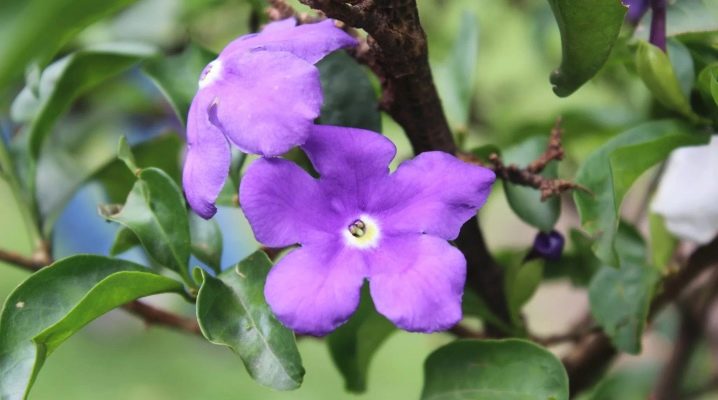
Brunfelsia (Latin Brunfelsia, Brunfelsiopsis) is a tropical, artisanal plant that belongs to the Solanaceae family. It grows in places such as, for example, the islands of the Caribbean Sea, in the countries of Latin America - Jamaica, Puerto Rico, Cuba. Based on this, it can rightfully be called an exotic plant.
Brunfelsia is an unusually beautiful and interesting plant that will delight you with its appearance during the day and pleasantly surprise you at night with its interesting scent, comparable to that of expensive perfumes.
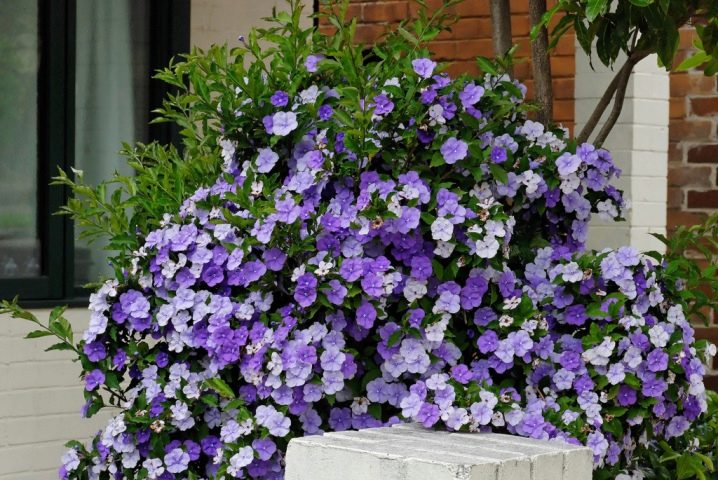
Where to place the flower to make it comfortable?
Brunfelsia is a rather unpretentious plant and for a very long time can be in dark areas (do without sunlight), while direct sunlight has a detrimental effect on brunfelsia. Therefore, it is often placed in less lit places. A darkened place on the windowsill or the far corner in the room will be enough for her. But if it is constantly cloudy outside the window, and the sun does not want to peep out from behind the clouds at all, then the plant may miss the lack of sunlight.
Do not forget the fact that the plant is quite large and grows up to a meter in height (depending on the variety and type of plant). Therefore, the place in which the flower will stand must be spacious enough.
Be careful - the plant is poisonous!
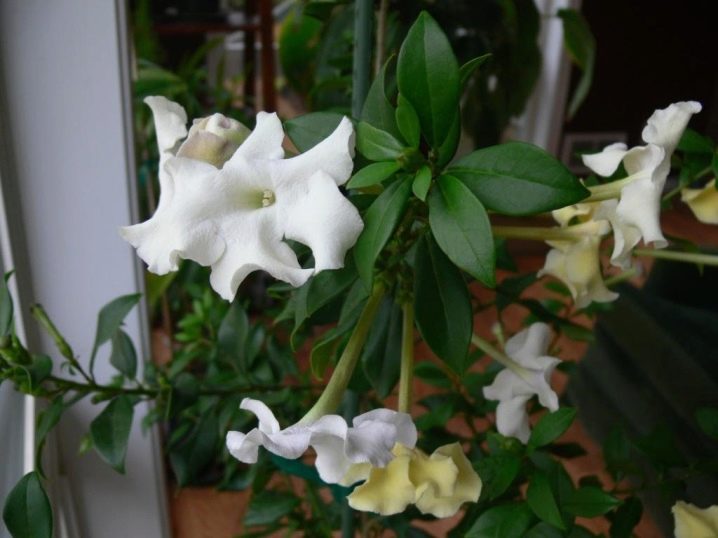
Before purchasing brunfelsia, you need to understand that this is a poisonous plant. Observe safety precautions when growing brunfelsia and do not let the juice of the plant get on your skin.
Although there is a downside to the coin: Brunfelsia is also used in medicine for pain relief, wound disinfection, for problems with seizures, and even for cleansing the liver.
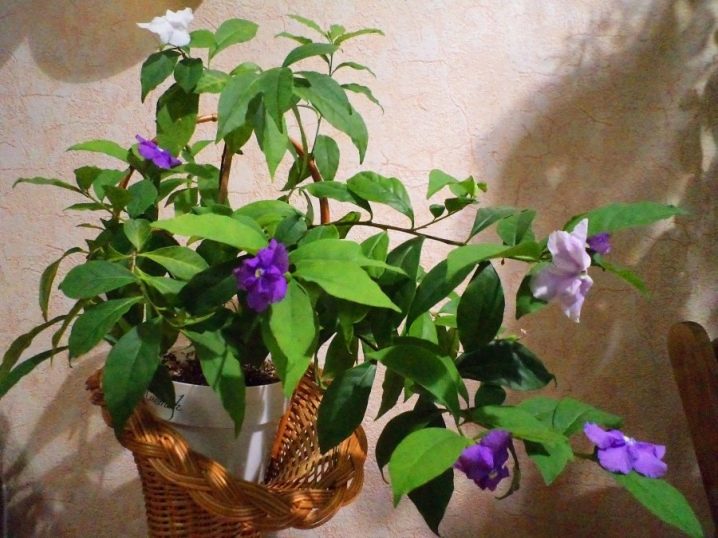
Home care
Brunfelsia is a big lover of water, because this flower is tropical, and watering should be constant (periodic), it does not tolerate long drought and dry soil. At the same time, avoid stagnant water. Ideally, the soil should be mostly moist.
Since the plant came to us directly from tropical countries, accordingly, Brunfelsia loves a humid climate. Sprinkle water on the leaves often and try to keep the air moist. In extreme cases, you can use a humidifier or put a container of water next to it.
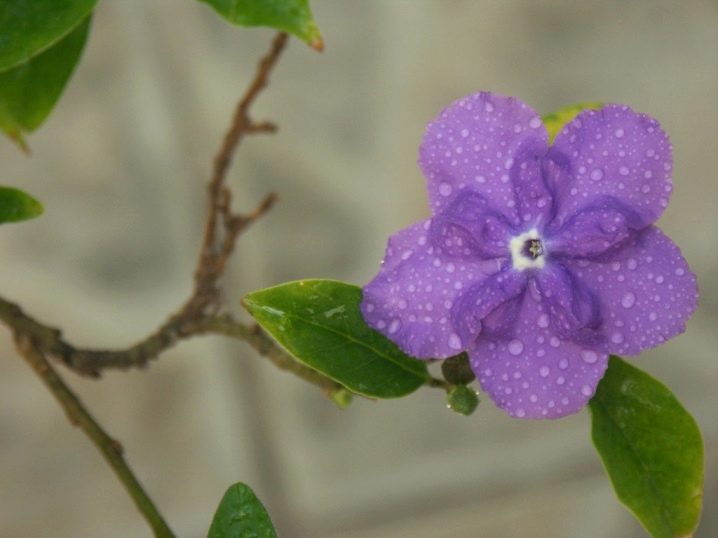
Pruning
If you want to maintain the neat appearance of your brunfelsia, then it must be trimmed periodically. Start pruning your plant immediately after the flowering period and before the dormant season. It is necessary to cut the branches by half or one third of the length, and do not forget to remove already adult or dried shoots.
Pruning Brunfelsia helps it to form new branches and renew buds so that it will delight you with its beauty again in the next flowering season.
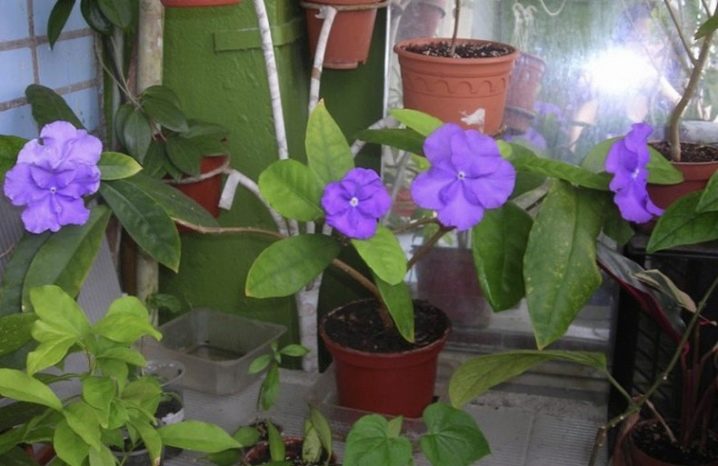
Transfer
In order for your flower to undergo a transplant well, you should transplant it only at the end of flowering, during a dormant period. In this case, it is easier for the plant to transfer the transplant and take root in a new place.
Young Brunfelsia is transplanted once a year, an older flower should not be disturbed so often and it is advisable to transplant only once every three years.
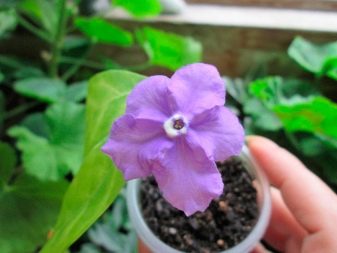
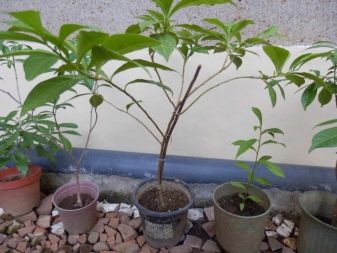
Features of species and varieties
Brunfelsia grandiflorum
A fairly common variety, with large and beautiful flowers.The blooming period of large-flowered brunfelsia begins in March and ends in October. Many people note the pleasant aroma of this variety and the exquisite appearance of the flowers themselves.
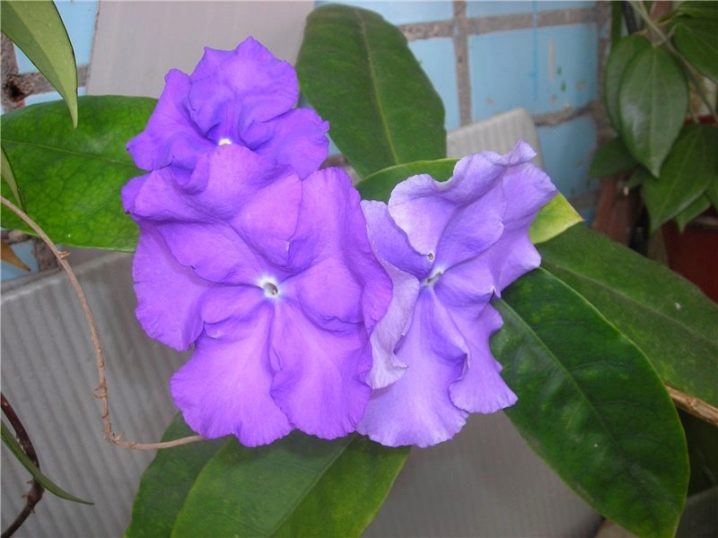
Brunfelsia americana
If you want a large and beautiful flower in your home or garden, then feel free to choose a variety of brunfelsia called americana. It grows up to six meters in height and will delight you at night with its pleasant and tasty aroma.
A distinctive feature is the leaves, which are in the shape of an ellipse, and the corolla measures up to ten centimeters.

Brunfelsia small-flowered
For indoor breeding, the type of brunfelsia small-flowered has become very popular. This species is less whimsical to the environment and adapts well to the room atmosphere. Also, the little-flowered brunfelsia is distinguished by longevity.
Small-flowered brunfelsia has many varieties, for example, it is dark purple, light purple and violet-flowered.
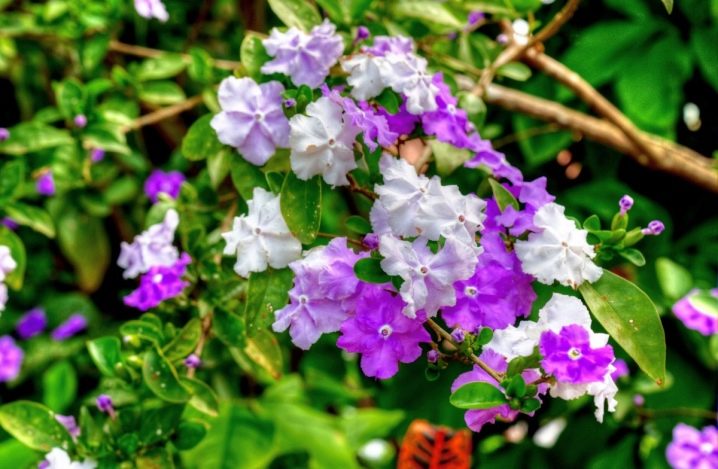
Brunfelsia "Isola"
This is one of the new hybrid varieties, the varieties Brunfelsia Americana and Brunfelsia Grandiflora were used for its breeding. Has a pleasant aroma and attractive appearance. Flowers are often elongated and elongated, cream or purple in color. It blooms slowly throughout the summer.
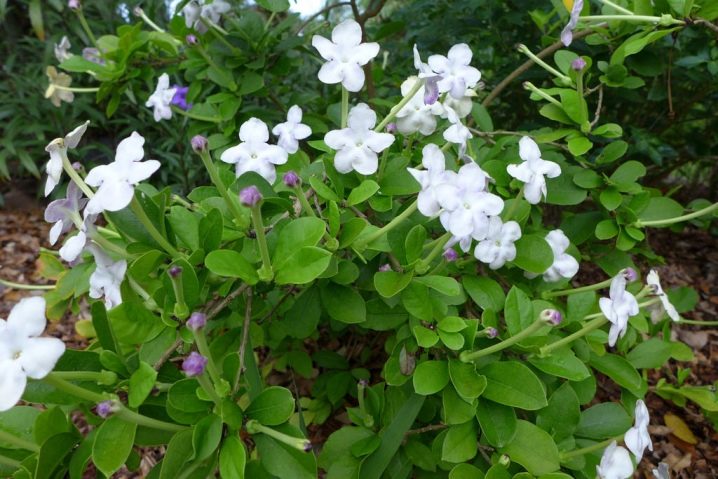
Brunfelsia "Nitida"
The unusual arrangement of flowers gives this species uniqueness and exclusivity. The flowers not only look interesting, but also have a delicate and pleasant scent.

Brunfelsia AS Monaco
This variety is a medium-sized shrub, approximately 2 meters high. The flowers are white. Also Brunfelsia "Monaco" is not deprived of its characteristic pleasant aroma.
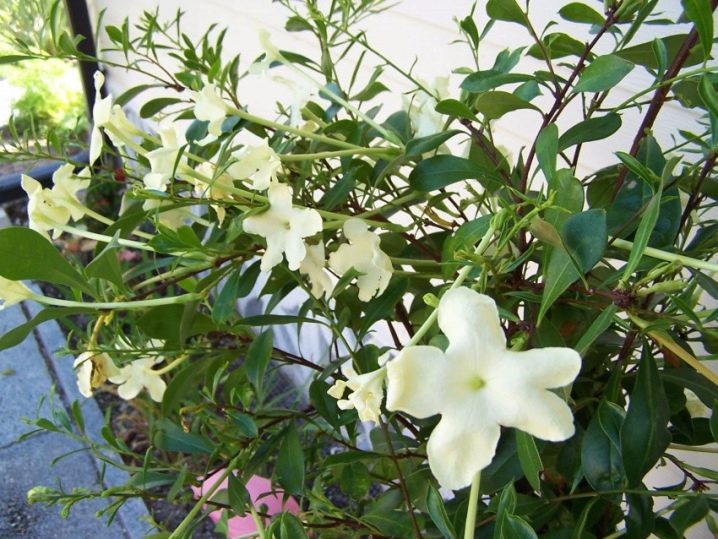
Brunfelsia "Laktea"
Or "Lady of the Night" - the flower got this name because of its pleasant smell at night. Brunfelsia "Laktea" is able to fill the space around itself with a delicious and unforgettable aroma. But during the day, its aroma is almost invisible.
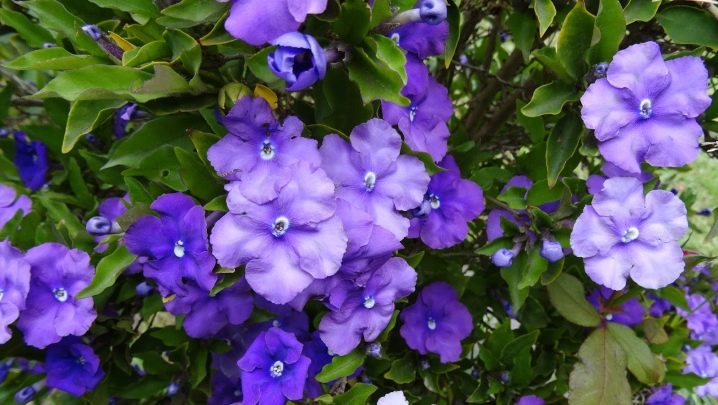
Brunfelsia "Uniflora"
It is a large and massive bush with beautiful small flowers (2.5 cm in diameter). In the process of flowering, the petals are colored blue or purple, but in the end all parts of the bud turn white.
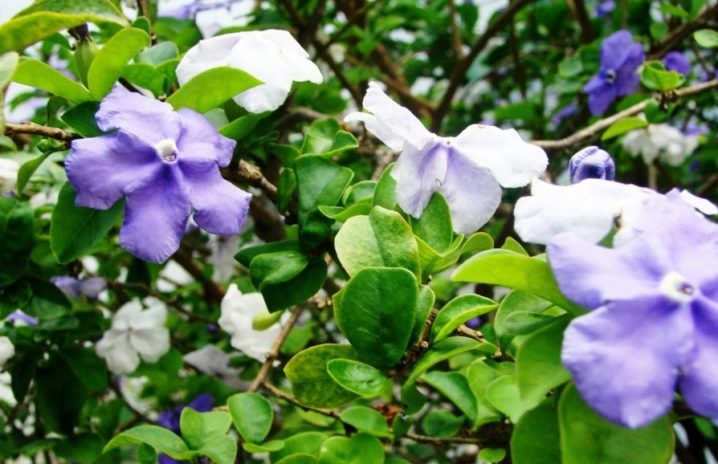
Brunfelsia "Latifolia"
It attracts with its unusual leaf shape (variegated shape). Quite compact, grows no more than one meter in height. It blooms throughout the summer, namely from May to September. The flowers are rich in white and purple.

Diseases and pests
Brunfelsia is not so afraid of diseases as various pests that are ready to feast on this beautiful flower. If you notice stem and root rot in a plant, then this indicates an invasion of pests. Namely, such as: spider mites, mealy worms, whiteflies, aphids and scale insects. To protect your plant from unwanted pests, periodically inspect the flower and, if necessary, treat it with a special agent.
Also, Brunfelsia may develop chlorosis on the leaves. To prevent this, water the flower only with soft water and feed it with nitrogen fertilizer a couple of times a month. Well, if this has already happened, treat the leaves with an iron chelate or other chelate complex.
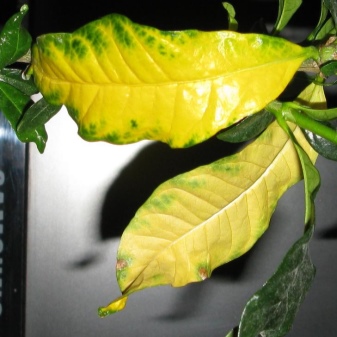
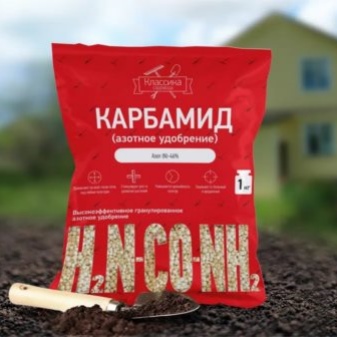
What if, after wintering, the flower gave out buds without leaves?
There are several reasons for this outcome.
Perhaps you watered the plant too often due to which you have waterlogged the soil. You also need to observe the temperature regime, especially at the beginning of the flowering period - Brunfelsia does not like cold.
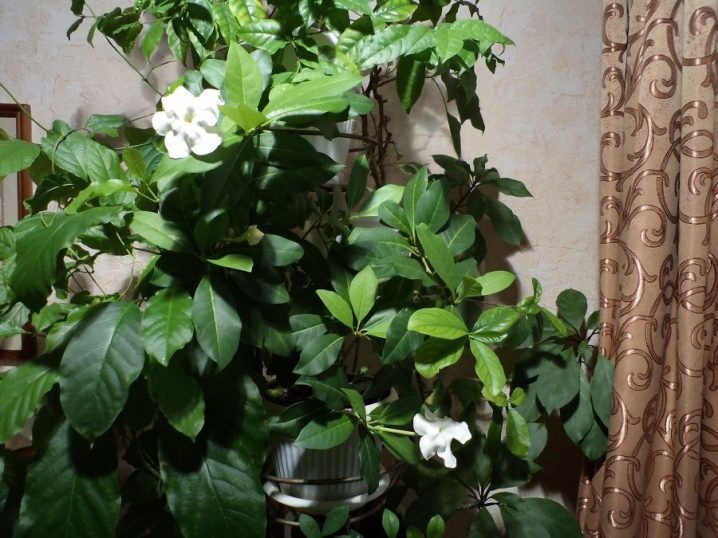
Reproduction of brunfelsia
Brunfelsia is propagated in two ways: from plant seeds or using cuttings.
Reproduction from seeds
To get brunfelsia seeds, you need to artificially pollinate the flowers. After 4–5 weeks, the first shoots appear in the seeds. Further, the seedlings can be planted in prepared pots. And after one or two months, the first shoots may appear.
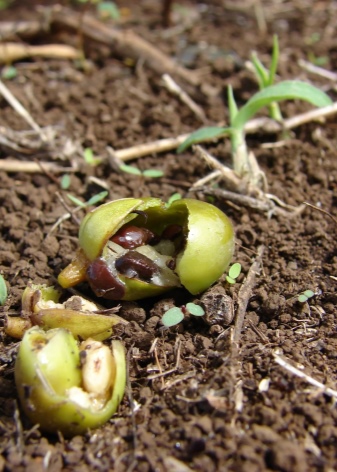
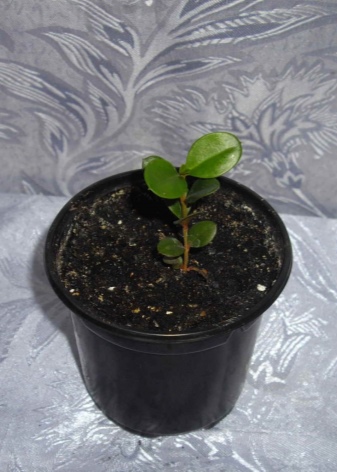
Propagation by cuttings
The most common way to propagate Brunfelsia is by cuttings. To get cuttings, it is enough to cut off the apical shoots 8–10 cm long (depending on the type and variety of brunfelsia).
Next, you will need to root the cuttings in water (perlite or sand) using a growth promoter. Do not forget to maintain a favorable air temperature around 24 degrees above zero.
The rooting process itself takes several months, so do not rush to transplant an unrooted flower into a pot. When you notice the appearance of new roots and young shoots, proceed to transplant the plant into a separate container.

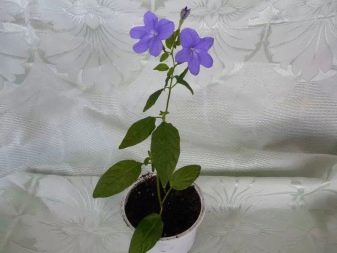
For a rare indoor plant brunfelsia, see the next video.























The comment was sent successfully.